20 FAQs and Tips for Packing a Carry-On for International Travel

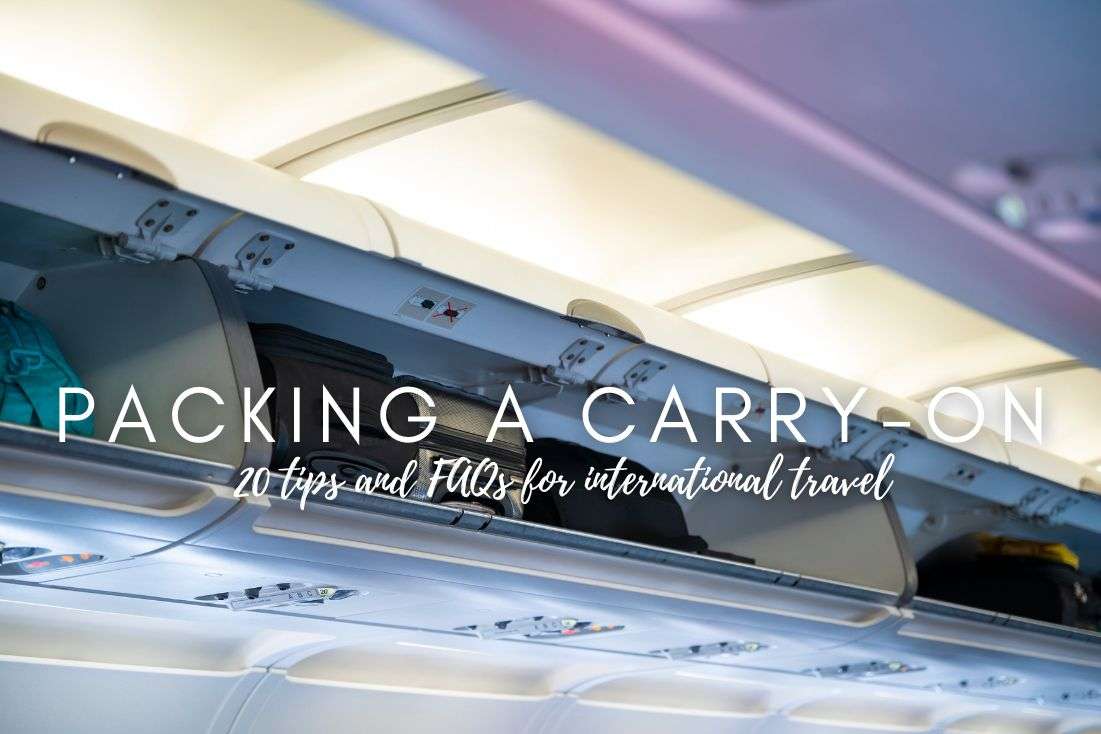
I love traveling; it's my passion, but packing... I hate packing. Unfortunately, it's unavoidable unless you have someone to do it for you. But since I'm no longer six, I don't have such a person and have to pack everything myself.
I won't tell you if you should take three functional shirts or five, or how many pairs of shoes to pack, because that depends on where you're flying to, what your plans are, and how much of a fashionista you are.
This article will focus on carry-on luggage, which has entirely different rules than regular checked luggage. If you don't want to get embarrassed at the airport by security rummaging through your bag for something that shouldn't be there, you'll want to read this. I'll advise you on how to pack a carry-on bag and, most importantly, what to pack in a carry-on bag.
Confession: Whoever never packed something in their carry-on that shouldn't be there, or whose luggage didn't meet the required dimensions, you can cast the first stone... I'll be honest, it's happened to me a few times, so I’ll just keep all my rocks.
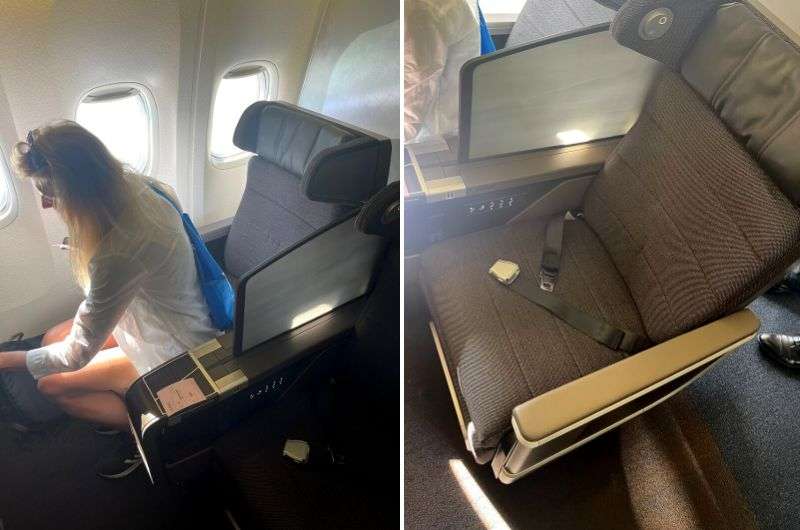
In Ana Premium Class we had plenty of legroom and a great luggage allowance
1. Not all carry-on luggage is created equal
Carry-on or cabin luggage is what you take into the cabin of the plane. But beware, even here, luggage is divided into categories, typically two.
A classic carry-on is one in which you can comfortably pack for a few days (we'll get to specific dimensions later). This luggage must fit in the overhead compartment.
Besides the carry-on, you're also entitled to one personal bag. The size of this bag can be compared to a schoolchild's backpack. It's a small personal bag that won't fit much more than a couple of socks and a laptop (I'm exaggerating a bit). The rule for this type of luggage is that it must fit under the seat in front of you.
2. Is carry-on baggage free?
Here's the deal: there are two types of carry-on bags, and whether they're free or not depends on the airline, class, and tariff. Some airlines give you both a carry-on and a personal bag for free. But others, especially on cheap economy flights, only include the personal bag for free, and you'll have to dish out extra for a proper carry-on. Generally, the higher the class, the more free luggage you get.
Examples of airlines with free carry-on and personal bag:
- American Airlines
- Delta Airlines
- Hawaiian Airlines
- Southwest Airlines
- British Airways
- Lufthansa
- Qatar Airways
- Singapore Airlines
- ANA Nippon Airways
- and all other Skytrax 5-star airlines
And those where only one bag is free:
- United Airlines
- JetBlue Airways
- Spirit Airlines
- EasyJet
- Wizz Air
- RyanAir
- ... basically every low-cost carrier out there
So, you might end up paying more for luggage than your ticket, especially if you snagged a deal on flights. But if you've got both cabin and checked luggage, a small backpack should be enough for the cabin.
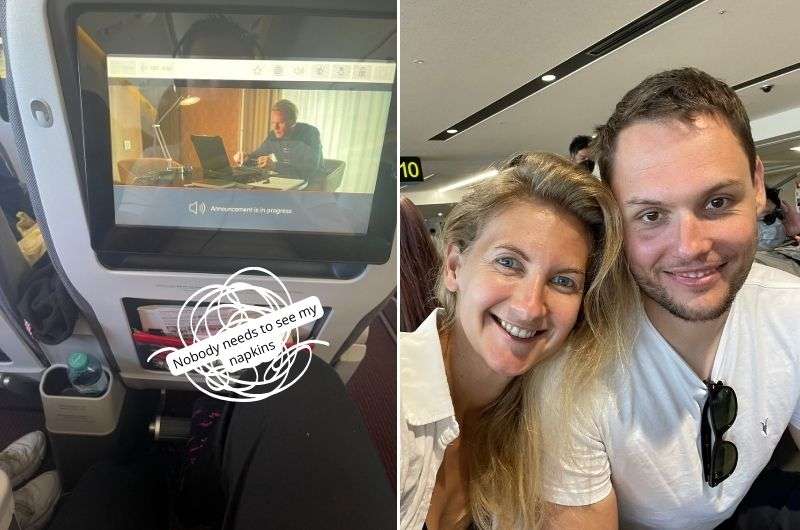
At the airport, more than anywhere else, nothing is really free - you need to pay for your luggage with your flight ticket!
3. The most confusing thing about carry-on luggage: size
You might know the saying that size doesn't matter. Well, let me tell you, it does—especially when it comes to carry-on luggage. If your bag exceeds the size limits, be ready to pay extra for those few additional centimeters.
The hottest question is: What's the standard size of a carry-on? I will answer, but just know there is a big BUT. You’ll need to worry about height, width, and depth, and the usual "standard” dimensions are 56 x 36 x 23 cm (22 x 14 x 9 inches), including handles and wheels. But don’t go ordering that new suitcase just yet...
Here's the catch—the airline has the final word. If they dream up different dimensions, you’ll need to conform, no matter what Jan on Next Level of Travel said. Always check the airline's website for size requirements before packing.
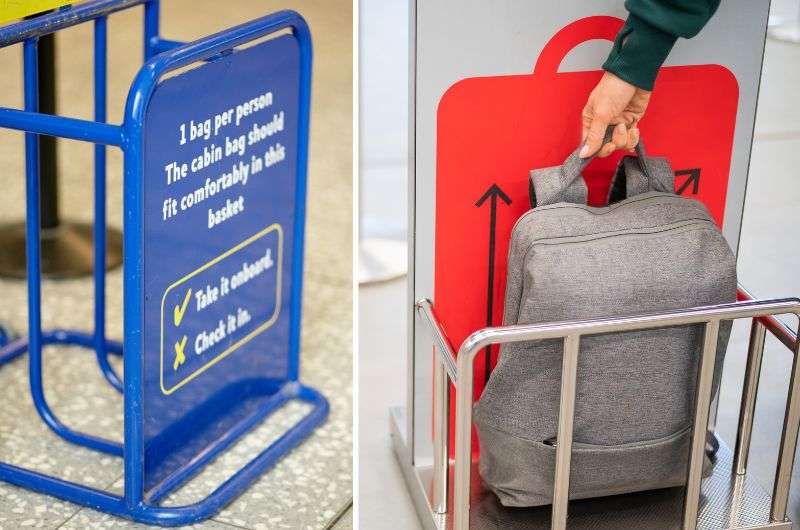
At airports, there is usually this stand where you can check the size of your hand luggage
4. Weight also matters
Just when you thought selecting a suitcase or backpack of the right size meant victory, there's another challenge: the weight limit. Many airlines usually allow carry-on bags with a weight limit of about 7 to 10 kg (15 to 22 lb). Not satisfied with this info? Of course not. Many isn't all, and a 3 kg (22 lb) difference can be a lot. So, as with the size, check the official airline website for the weight limits of carry-on luggage.
And because I like you and want to make travel as easy as possible for you and me both, I've compiled the allowed dimensions and weights for carry-on luggage for selected airlines, all free within the flight:
- American Airlines carry-on bag size: 56 x 36 x 23 cm (22 x 14 x 9 in) and 45 x 35 x 20 cm (18 x 14 x 8 in), official website
- Delta Airlines carry-on bag size: 56 x 35 x 23 cm (22 x 14 x 9 in) and personal bag, official website
- Southwest Airlines carry-on bag size: 61 x 40 x 25 cm (24 x 16 x 10 in), official website
- United airlines carry-on bag size: 23 x 35 x 56 cm (9 x 14 x 22 in), official website
- British Airways carry-on bag size: 40 x 30 x 15 cm (16 x 12 x 6 in) and 56 x 45 x 25 cm (22 x 18 x 10 in), official website
- EasyJet carry-on bag size: 45 x 36 x 20 cm (18 x 14 x 8 in), max. 15 kg (33 lb), official website
- KLM carry-on bag size: 55 x 35 x 25 cm (22 x 14 x 10 in) + personal bag 40 x 30 x 15 cm (16 x 12 x 6 in), official website
- Lufthansa carry-on bag size: 55 x 40 x 23 cm (22 x 16 x 9 in), max. 8 kg (17.6 lb) + personal bag 40 x 30 x 10 cm (16 x 12 x 4 in), official website
- Air France carry-on bag size: 55 x 35 x 25 cm (22 x 14 x 10 in) and 40 x 30 x 15 cm (16 x 12 x 6 in), max. Combined weight 12 kg (26.4 lb), official website
- Norwegian carry-on bag size: 30 x 20 x 38 cm (12 x 8 x 15 in), max. 10 kg (22 lb), official website
- Qatar Airways carry-on bag size: 50 x 37 x 25 cm (20 x 15 x 10 in), max. 7 kg (15.4 lb), official website
- Ryanair carry-on bag size: 40 x 20 x 25 cm (16 x 8 x 10 in), official website
- Swiss carry-on bag size: 55 x 40 x 23 cm (22 x 16 x 9 in) max. 8 kg (17.6 lb), official website
- TAP carry-on bag size: 55 x 40 x 20 cm (22 x 16 x 8 in), max. 8 kg (17.6 lb) + personal bag 40 x 30 x 15 cm (16 x 12 x 6 in) and 2 kg (4.4 lb), official website
- Wizzair carry-on bag size: 40 x 30 x 20 cm (16 x 12 x 8 in), max. 10 kg (22 lb), official website
5. Suitcase or backpack?
There's no one-size-fits-all answer to whether a suitcase or backpack is better for carry-on luggage—it all depends on where and how long you're traveling. The key factor is whether you have checked luggage as well. With checked bags, you're free to carry just a little purse (or something manlier) on board—total game changer.
However, if your carry-on is your only luggage, I recommend a backpack for practical reasons. Backpacks are typically lighter than hard-shell or any other type of suitcases, meaning you save some weight for more items. Also, suitcase dimensions often include wheels and handles, reducing the already limited storage space.

Me with my backpack observing the magnificent view of the Kazbegi Mountains in Georgia
For hiking enthusiasts like me, here’s another bonus: a backpack is advantageous for trips to the trails, since navigating forests and mountains with a carry-on suitcase isn't exactly practical.
A downside of backpacks is their lack of organization—it's very frustrating when that one thing you need is at the very bottom of your backpack, and rummaging through it means disrupting your carefully crafted organization of items (because they otherwise wouldn’t fit). Some backpacks open from the side like a suitcase, which I find brilliant (but don’t have one).
6. How to ruin your trip before it even starts aka forbidden items in carry-on bags
Using common sense will usually keep you out of trouble when deciding what's safe for your carry-on. But, as repetition is the mother of learning, here's a list of no-nos to ensure smooth sailing through airport security.
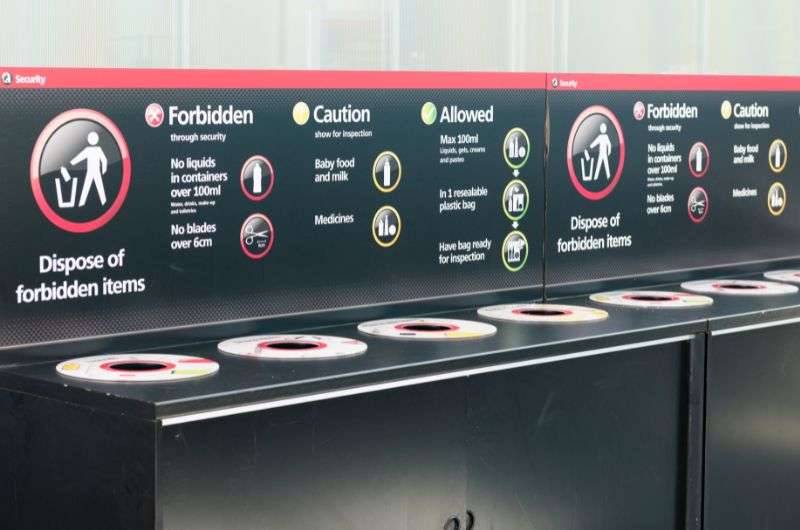
It's good to know in advance which things to leave at home
Liquids
Generally, liquids up to 100 ml (3.4 oz) are allowed. But don't think drinking from your travel bottle to make it contain less than 100 ml will work—the container's max volume must be clearly marked and is what counts, even if there’s barely anything left in it. The total volume of liquids per person is 1 liter (34 oz), but more on this in the section about what you can actually bring on board.
Weapons
You'd probably guess that weapons should stay home without me having to tell you, and you'd be right. This includes toy guns for kids too—I've seen some sad goodbyes to favorite toy pistols at airports. And I’m not just talking real-looking replicas, but weirdly colored tiny Nerf shooters too. I was so sad.
Most airports allow scissors or knives up to 6 cm (2.3 in), but check this for all countries you're flying through.
Story time: A friend of mine was arrested and tried at Madeira airport for carrying a pocket knife. No big drama, though; after “just” 5 days, it was all sorted, but he had to pay a fine and buy a new ticket home—still better than staying in a Portuguese jail.
Explosives
Thinking of flying with New Year's fireworks (I can’t imagine why else you’d be interested in this topic)? Well, any explosives are a no-go on planes. Did I really have to tell you that?
Tip: If you've been out shooting or setting off fireworks before a flight, change clothes. Airports randomly check for gunpowder residue, and a positive result means opening all your stuff and complicating your journey. If you’re already a nervous flyer or you’re flying for the first time, any extra uproar won’t help your case one bit.
Chemical and toxic substances
Leave your unusual chemistry hobbies at home. Transporting chemical and toxic substances is strictly prohibited. Again—no surprise there.
Tip: While I don't expect you to be stopped from boarding over a banned item in your carry-on bag, it's always better to be safe than sorry (especially if you’re going to Madeira). I recommend booking hotels on booking.com with a fully refundable option, just in case.
7. Things you actually can take on board in your carry-on
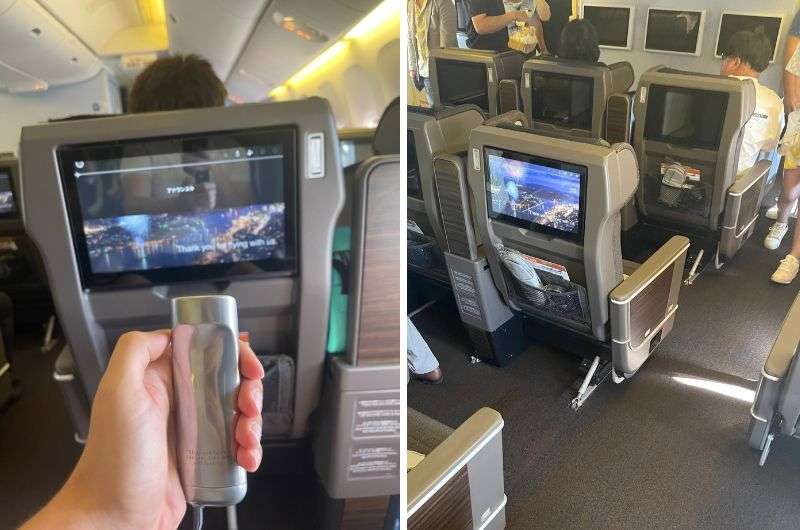
Some flights are so well appointed that you hardly need to bring anything of your own—in Ana Premium Class they have great remote-control screens to keep you entertained for the whole flight
Worried that after the no-no list, you'll have nothing left to pack in your carry-on? Fear not, there's plenty you can—and should—bring.
Liquids
You can bring liquids in containers of up to 100 ml (3.4 oz). The total amount can be up to 10 containers, making 1 liter (34 oz) max. They must fit in one clear, resealable plastic bag of up to 1 liter. Don't have a bag? Grab one before airport security... if there are any left that is. I like to take my own reusable one and not juggle my deodorant and nighttime skincare routine in front of everyone).
What counts as liquids? Liquids include drinks, creams, makeup, perfumes, shampoos, shaving foams, mascaras, nail polishes, lip glosses, mouthwashes, dry shampoos, and much more.
If you have small children, baby food is exempt from these liquid rules. Also, if you have medications prescribed by a doctor in volumes over 100 ml (3.4 oz), don't worry, you can take them on board. Speaking of which...
Medications
For medications, bring them in their original packaging with leaflets. If you have unusual meds, like codeine, carry a doctor's note too. This is especially important as some medications are restricted or considered drugs in certain countries.
Tip: If you're checking a bag, always carry your meds in your carry-on, in case your checked luggage gets lost.
Electronics
Electronic devices are welcome on board, and those with lithium-ion batteries (phones, laptops, tablets, e-cigarettes, or just spare batteries) actually must be in your carry-on and cannot be in your checked bags (It’s because if the battery happens to combust in the depth of the cargo hull, well, that would suck.). Hence, many airlines allow a personal bag for your electronics.
Note: If you're carrying electronics with sharp parts, like a blender, they must comply with weapons regulations. Also, where are you taking your blender?!
8. Can I bring food on the plane?
Of course, food is allowed. There's nothing worse than a hungry tourist and nasty (or non-existent, if you're flying economy) airplane food, haha. However, all food must be in a solid state, like sandwiches or chicken. Soups and yogurts count as liquids, so they must meet the 100 ml (3.4 oz) limit.
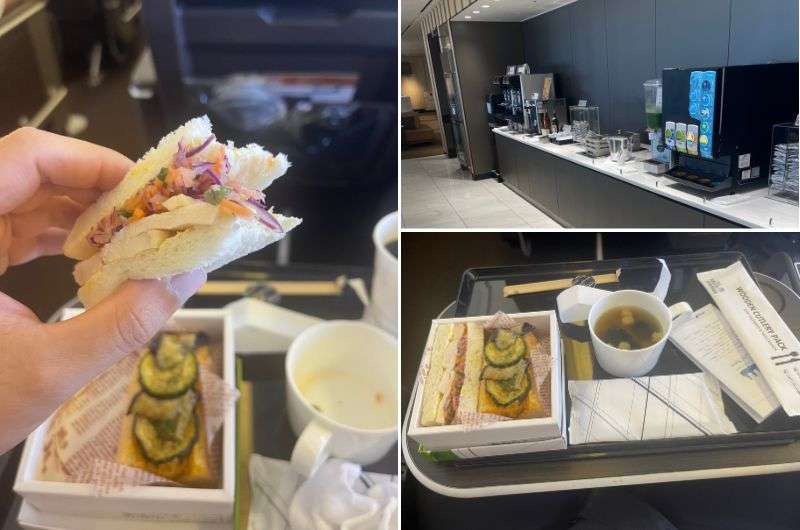
If you choose an airline that offers good food by airport standards, you don't have to bring your own!
9. Can you bring a bottle of water on the plane?
You might logically think that water unfortunately falls into the liquid category, so you can only take up to 100 ml (3.4 oz) of water (that would be hilarious!). But generally, water purchased at the airport is usually allowed on board the plane. This varies by airport, so it's best to check in advance. From my experience, water isn't an issue at Ezeiza International Airport (Argentina), London City Airport, Shannon Airport (Ireland), Schiphol Airport (Holland), Lihue Airport (Hawaii), and all UK Airports (new as of June 2024) – these are the ones I can recall.
If you're unsure, just get your water after security, or here's a little travel hack: bring an empty bottle with you and fill it up with tap water or from a drinking fountain after security control. Because paying $5 for a small bottle of water should be a federal offence.
10. Don't forget your travel documents
Before heading to the airport, double-check that you have all the necessary travel documents. Besides your ticket, passport, or ID card, some countries require a printed visa or proof of vaccination/recovery from illness.
If you don't trust your phone, consider printing your ticket, so you can comfortably travel even with a dead phone. I know we're all trying to save trees, but the stress of running around the airport looking for a printer is not worth it.

Each country requires different travel documents—here's a photo of me successfully getting into Turkey!
Tip: Choose one easily accessible spot in your carry-on to always place all your important documents. This will prevent the constant panic of checking and ensuring you have all your documents and important papers.
Tip vol. 2: If you're unsure about the required documents for international flights and where to find this information, read my comprehensive (aka amazing and detailed) "25 Facts and FAQs About Travel Documents: A Detailed Checklist for International Travel"
11. Airport security shenanigans
This part involves the stress of going through the X-ray machines, which can be the most nerve-wracking part of the whole flight. It's similar to the feeling when a ticket inspector steps onto the subway and, even though you have a valid ticket, you suddenly feel like you for sure lost it, didn’t validate it, or otherwise are guilty of a horrible crime.
While waiting in the security line, you might start to worry whether you accidentally packed drugs or a huge kitchen knife in your backpack, even though you've never taken drugs and don't cook at home. Stay calm and don't panic.
Before you and your carry-on pass through the scanner, you'll have to place your bags and some of your personal items in bins on the conveyor belt before the scanners. Here's a list of what you need to do and what airport security will be shouting at you (and everyone else):
- Take off any “extra” or baggy outer clothing, like your jacket and sweatshirt
- Take off your hat
- Take off your shoes only if you’re wearing big boots or platform shoes (anything that could serve as a hiding spot for drugs)
- Take off your watch
- Take off your belt
- Take everything out of your pockets
- Take your laptop out of your bag
- Take your 1-liter clear baggy of liquids out of your bag
- Take any medication, empty bottles, and knives/scissors out of your bag
Once you strip yourself of every conceivable threat, send the bins off into the x-ray machine and wait your turn to walk through the scanner (usually a “backscatter passenger scanner”, but I still call it the x-ray machine).
Then, all you need to do is walk through the scanner and wait to see if your items will follow shortly. If they do, congratulations, you've aced this stress test! You can then collect your belongings and calmly head to the gate to wait for your flight.

Once you get past airport security, the worst is over, and you can look forward to beautiful places like Mini-Europe in Belgium
12. What if they take my bag aside?!
Another possibility is that your carry-on luggage will be flagged and a security officer will take it aside. This means you're either a terrible criminal smuggling something illegal, or you've packed a bottle of dry shampoo larger than 100 ml.
In such cases, you'll be called over for an explanation. They can't just search your bag, so they may ask you to open it yourself and take out the contents. Then, you start taking out item by item, unrolling each neatly packed shirt, until they eventually find nothing of interest and tell you that you can go. Yes, this can happen. Your nerves and perfectly packed bag might be a mess, but you made it through.
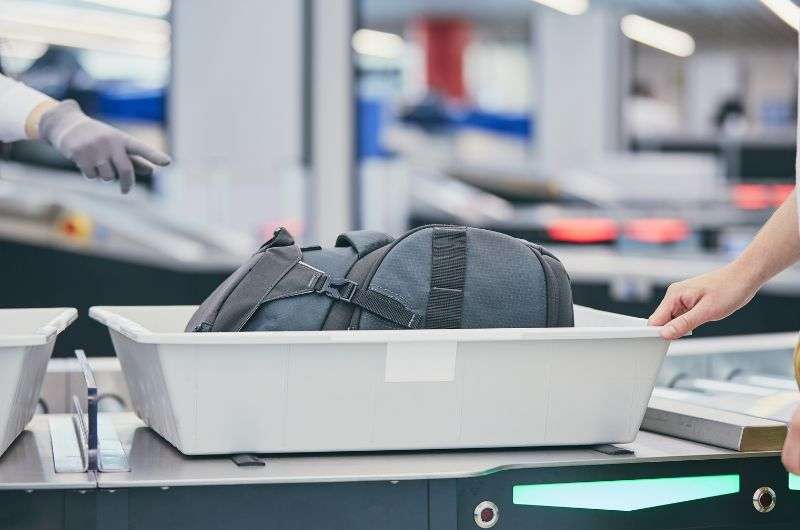
Oh no, they’re pointing at your bag
13. What if they find “something“?
If security doesn’t like something you have in your carry-on, you have three options (not really). First: leave the prohibited item at home, haha, which is doable even without checked luggage and it’s too late for that now.
The second option is to put said item in your checked luggage, but, if you’re already at security, it’s too late for that now, too. Of course, some items can't be carried in checked baggage, but a full bottle or knife can be.
The third and least favorite option is that your item simply gets confiscated, and you have to say goodbye to it. Losing a shower gel might not be a big deal, but parting with Grandpa's pocket knife (over 6 cm or 2.36 inches) could be regrettable. Some airports offer—for a very high price, of course—the option to send the banned item to yourself by mail or messenger. I’m guessing you’d only consider that option for that knife your grandpa gave you.
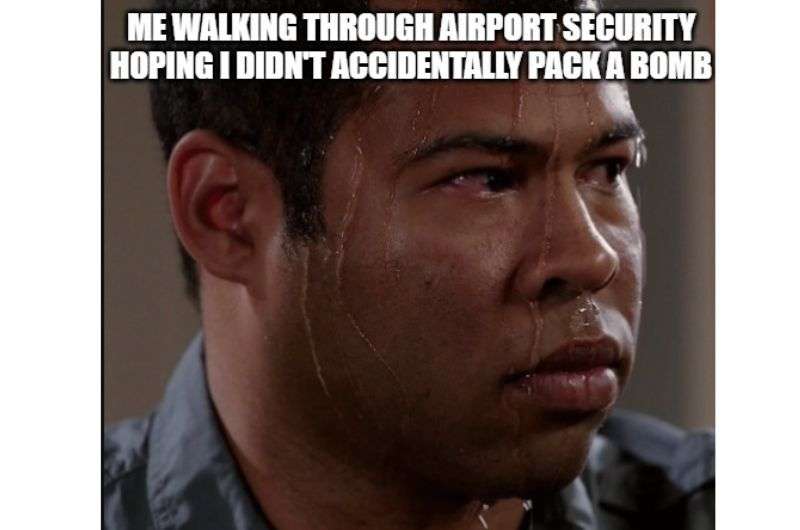
Good to know: If you decide to send something in checked luggage, remember it might get lost during the journey. Especially in developing countries, employees often pilfer through checked suitcases. If you want to bring a bottle of alcohol, you can buy it at the airport's duty-free shops, where it'll be packed in a special bag, allowing you to take it on board.
Tip: If you're flying for the first time or just stressed about flying and all the checks like document verification, luggage, and everything else, be sure to read "21 FAQs and Tips for the First-time Flyer: From Finding Departures to Making it to Arrivals." I also have an article solely about getting through security.
14. You still have one critical point ahead: gate
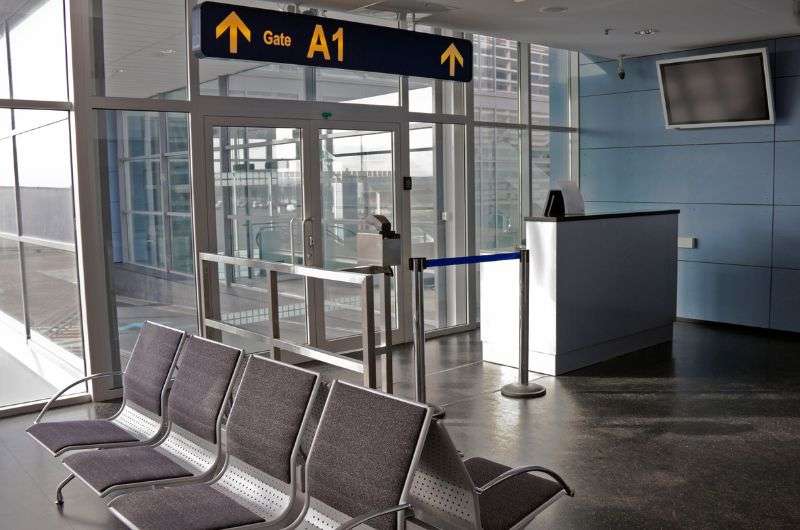
The last checkpoint you need to succeed at to get on the plane
Think you're all set? Not quite, there's one more slightly stressful moment. While airport security checks the contents of your carry-on, they don't care about its size—unless you're trying to get a shipping container through. However, the size of your carry-on is only checked at the gate, and it depends on who you meet there. I've seen people board with large backpacks, carry-on bags, two plastic bags, and even a giant plush elephant without issue.
In my experience, full-service airlines (like British Airways, American Airlines, Delta Airlines, Lufthansa, Air France, KLM) usually don't fuss over luggage size. However, low-cost airlines (such as Wizz Air, Ryanair, Virgin America) are meticulous about it. They have to make up those low costs somewhere, right?
You might also encounter a situation where your bag appears just 3 cm (1.18 inches) too wide, and you're asked to fit it into a metal frame to check if it meets the size requirements. If your suitcase is slightly oversized, you can't force it in. But as I mentioned earlier, my number one tip for packing a carry-on is to choose a backpack over a suitcase. With a bit of strength and will (and maybe putting a few things into your pockets instead), you might be able to squeeze the backpack into the frame and “pass” the size check.
15. What happens if I have a larger carry-on bag?

Take the hassle out of packing before your trip and relax as soon as you land in a beautiful hotel where you won't miss a thing
If you realize while packing at home that you can't fit everything into your carry-on size, it's better to pre-purchase additional or larger luggage online. This option is usually cheaper than buying it at the airport. Some airlines even allow you to purchase extra baggage online up to two hours before departure.
If your carry-on doesn't pass the airport check (due to excess weight or size), you'll have to pay extra. The surcharge varies by airline and luggage size.
Note: To reassure you, out of my 350 flights, I've only had issues with my carry-on twice, even though it's usually larger than allowed. But I don’t fly low-cost.
16. Where should I keep my bag on a plane?
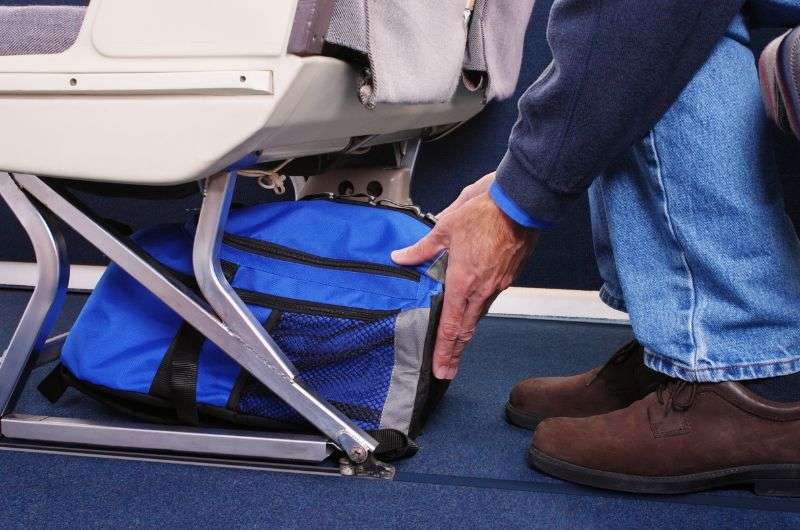
Put your bag there right away so the flight attendant doesn't have to remind you
Once you and your carry-on have (hopefully) successfully passed the security check, it's time to board the plane. You'll take your assigned seat, as indicated on your boarding pass, but what about your bags?
If you think you can just keep your backpack on your lap and rummage through it comfortably during the flight, think again. During the flight, luggage must be placed either under the seat in front of you or in the overhead compartment. As mentioned earlier, larger suitcases go in the overhead compartment, and smaller bags under the seats.
Traveling with only a carry-on bag
Traveling with just a carry-on is an art form. Packing smart and having a few tricks up your sleeve is crucial, otherwise, you'll miss out on important items or run out of space. Here are some tips on how to pack a carry-on to simplify this puzzle.
17. Be ready for compromises
From the start, accept that you'll need to trim your item list and only bring the essentials.
Check the weather at your destination in advance and pack accordingly. The mindset to follow is: leave behind anything you can buy there. This applies to clothes, cosmetics, etc.
Tip: Many good hotels offer laundry services, allowing you to pack less and reuse more! I always book my hotels through booking.com for its user-friendliness, photos, reviews, and sometimes special prices. [If you book through any of my affiliate links, rest assured that while I may get a small commission, you won’t pay anything extra. Thank you for the support!]
18. Cosmetics can make or break you
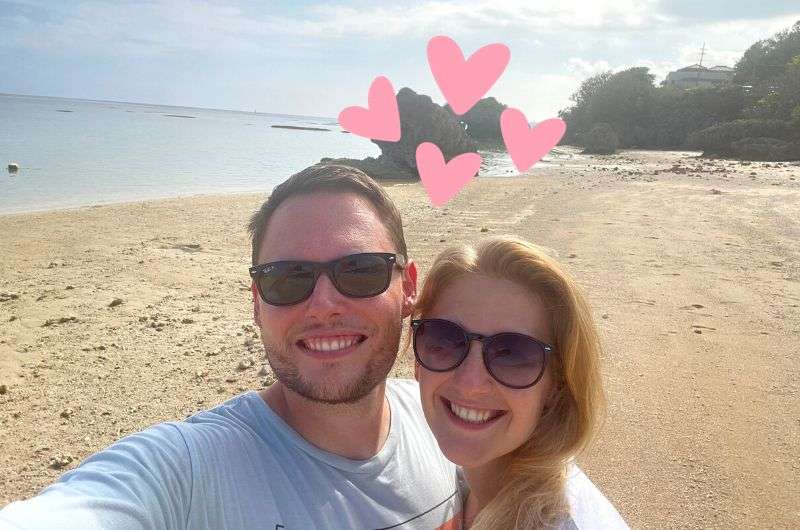
Make sure your precious halves pack only the essentials—they are beautiful even without makeup!
As a man, my cosmetics are simple, but I know from traveling with my girlfriend that she could fill a whole carry-on with just her skincare routine.
How to save space? A few ways. Forget travel-size cosmetics that cost as much as the full-size version. Get small 100 ml (3.4 oz) bottles to transfer your favorite products into. This lets you bring only what you need, without having to compromise on quality. Another option is to really minimize your cosmetics. We always stay at hotels where basic toiletries are provided. Sure, there are items I prefer, like a quality toothbrush, but any shampoo will do for my hair.
19. Be smart, pack smart
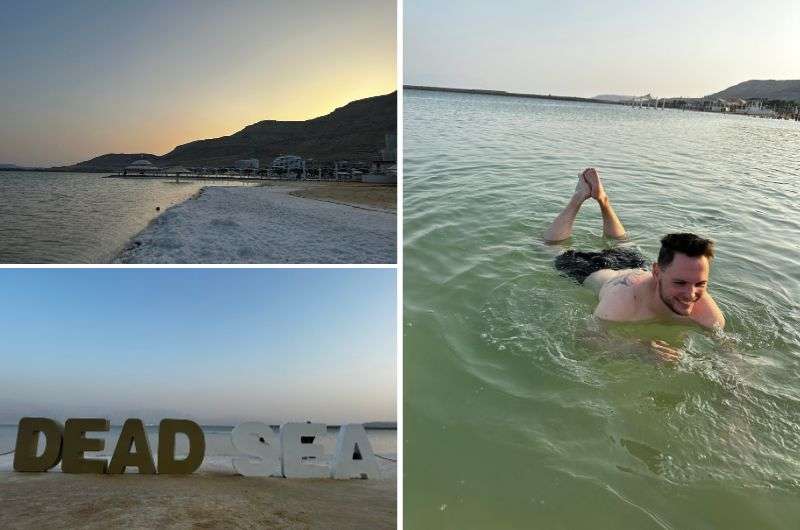
You can’t swim in the Dead Sea without packing your swimsuit!
The best way to pack a carry-on is to lay out all your items, panic thinking they'll never fit, and then dive into it.
Place items like shoes (which can hold small items) at the bottom. Roll clothing and towels, and fill gaps with small items like socks and underwear. Keep cosmetics that you'll need to remove at security checks on top.
Tip: If you always forget something while packing, check out my ultimate packing list to make sure you pack everything you need.
20. Essentials to always pack in your carry-on
Whether you’re traveling with 5 checked bags or just a small cabin bag, certain items are essential to always have with you. These are:
- passport and ID card if you have one
- travel insurance
- insurance card
- driver's license plus international one if needed and if you plan to drive
- cash
- credit and debit cards
- phone + charger + power bank
- travel adapter
(see my Travel Documents Guide for details on many of these items)
And then there are some things that you'll enjoy your vacation just as much without, but you'll be annoyed that you forgot them:
- Sunglasses (if you're traveling for warmth, like to Italy or Spain)
- pyjamas
- pen
- toothbrush
- and a lot of other things, actually.
But my rule of thumb is that the most important thing is your passport and credit card, everything else can always be sorted out on the spot. I had a couple trips where I had to buy a change of clothes locally before my lost luggage arrived. Did it ruin my vacation? No! Did I still look handsome? Obviously! It’s all about perspective.
Tip: If you're travelling with both hand luggage and checked luggage, I recommend taking a few spare pieces of clothing and other essentials in your carry-on. Just in case your checked luggage doesn't arrive at your destination, and you want to be double-sure you don’t need to get new stuff at the airport gift shop.

Ready for any weather! Here I am braving it in Scotland
This post contains affiliate links. I earn a small commission if you make bookings through my links, at no additional cost to you. Thank you for your support!

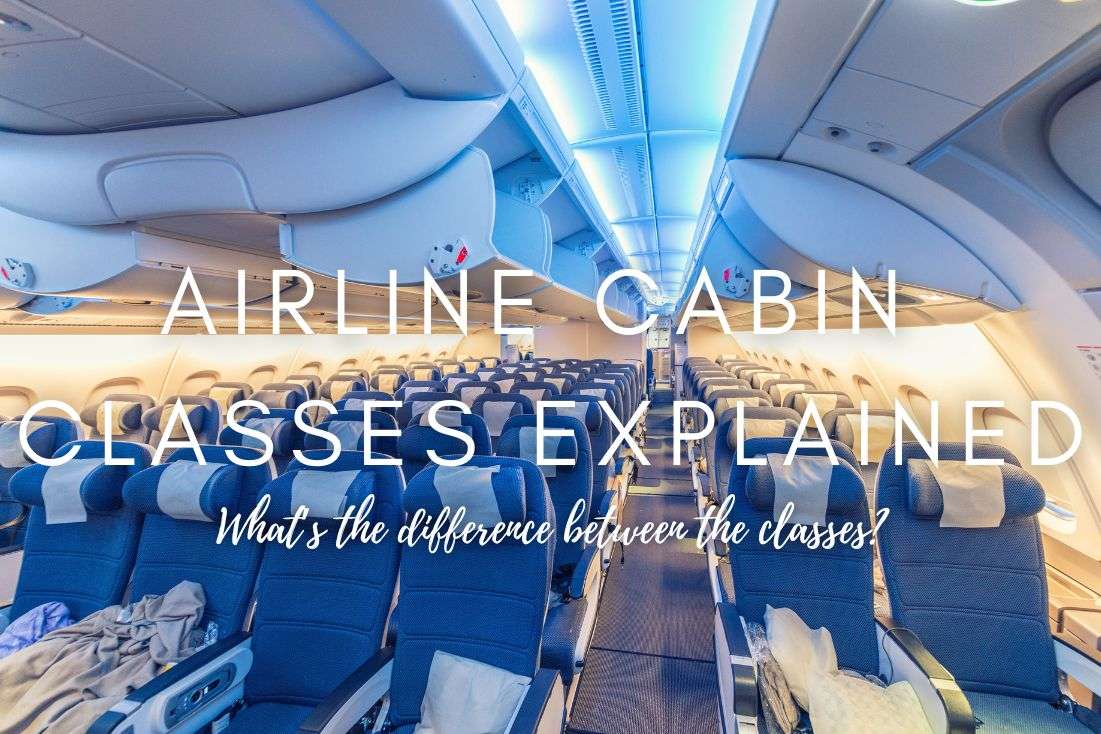
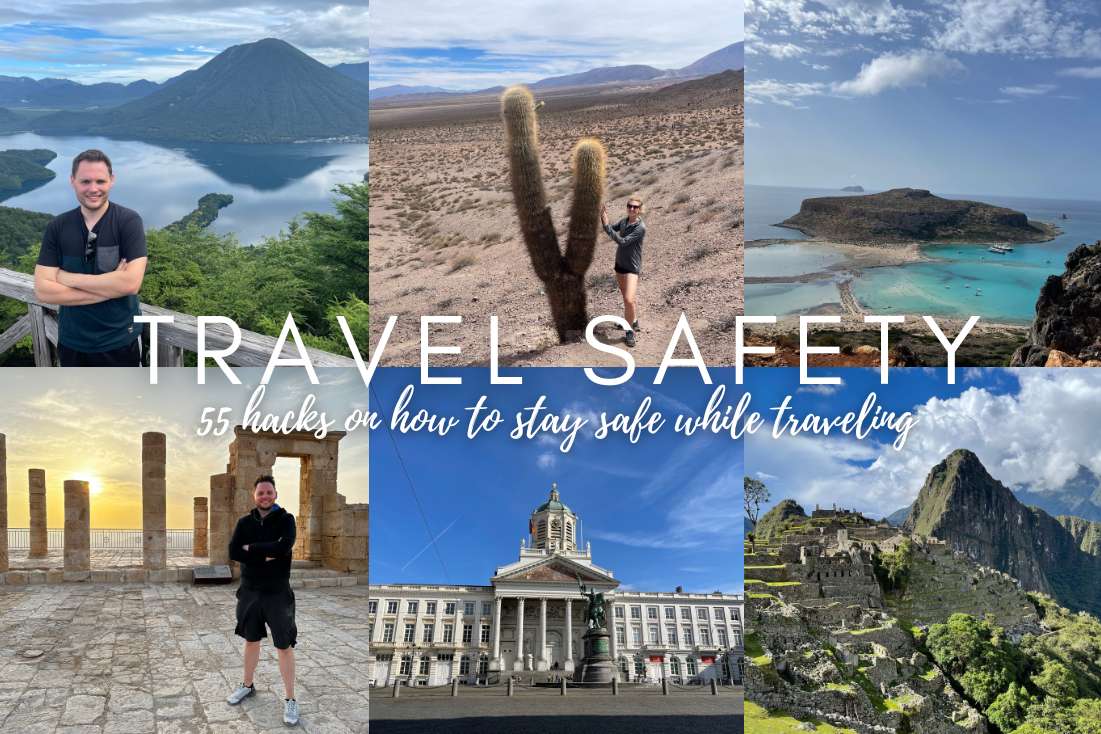




Comments
Thoughts? Give us a shout!